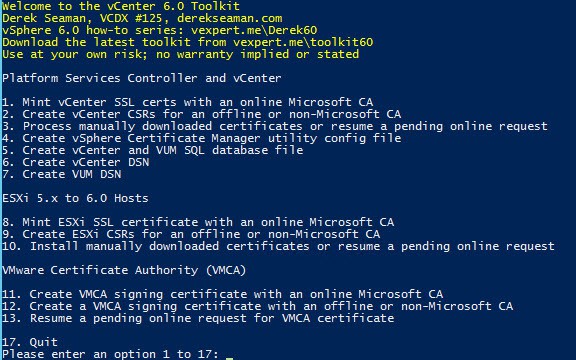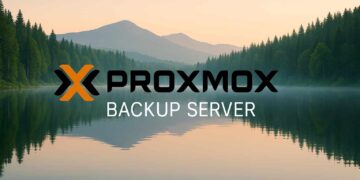At VMworld 2014 VMware revealed bits and pieces of what’s new in vSphere 6.0. A lot of information was still under NDA and not disclosed, so attendees didn’t get the full picture of the new virtualization platform. But now that it’s announced, all can now be revealed. Unlike the last several years where the release has been in the fall of each year, this release cycle has been extended. Hopefully some extra QA was involved, so there aren’t so many issues with the GA release.
I’ve created a shortened permalink that you can use for quick reference: vexpert.me/Derek60 for this series. Feel free to use however you like…PowerPoint slides, email, etc. If you find this series helpful, please spread the word. This will be very similar to my vSphere 5.5 series, where we walk through some of what’s new, installation process, SSL certificate replacement, and other processes. The articles will be released slowly over the next couple of months.
Series Agenda
Like my vSphere 5.5 series it will cover at least the following topics:
- Upgrade or fresh install?
- Deep dive on the Platform Services Controller (PSC)
- vCenter upgrade best practices and tips
- ESXi upgrade best practices and tips
- Right sizing your Windows vCenter VM
- VMware Certificate Authority (VMCA)
- Creating vCenter SSL certificates
- Using a SQL 2012 AlwaysOn Failover Cluster for the vCenter database
- Installing the full vCenter stack of software on Windows
- Configuring VUM
- ESXi host SSL certificate replacement
- Deploying the vCenter Server Appliance (VCSA)
While I have two entire blog posts dedicated to upgrade best practices and tips, the step-by-step instructions will assume a fresh install. This is the VMware recommended approach, but doesn’t work for everyone. Upgrade how-to’s are complex, IMHO, since customer configurations will wildly vary. This is particularly true with SSO and the many deployment options, coupled with little VMware best practices around SSO.
Blog Series
vSphere 6.0 Install Pt. 1: Introduction
vSphere 6.0 Install Pt. 2: Platform Services Controller
vSphere 6.0 Install Pt. 3: Certificate Management
vSphere 6.0 Install Pt. 4: vCenter Upgrade Best Practices
vSphere 6.0 Install Pt. 5: ESXi Upgrade Best Practices
vSphere 6.0 Install Pt. 6: Install Windows PSC
vSphere 6.0 Install Pt. 7: Config SQL DBs
vSphere 6.0 Install Pt. 8: Toolkit Configuration
vSphere 6.0 Install Pt. 9: SSL Templates
vSphere 6.0 Install Pt. 10: Install VCSA PSC
vSphere 6.0 Install Pt. 11: VMCA as Subordinate
vSphere 6.0 Install Pt. 12: PSC Machine Certificate
vSphere 6.0 Install Pt. 13: Directory Services Certificate
vSphere 6.0 Install Pt. 14: Windows vCenter Install
vSphere 6.0 Install Pt. 15: VCSA vCenter Install
vSphere 6.0 Install Pt. 16: User Solution Certificates
Permalink to this series: vexpert.me/Derek60
Permalink to my Toolkit script: vexpert.me/toolkit60
Database Support
VMware now officially supports SQL 2012 AlwaysOn failover clusters (using shared storage) for the vCenter database. It does NOT support AlwaysOn Availability groups or database mirroring. To that end I recently wrote a soup to nuts guide (12 parts) on how to install a SQL 2012 Failover Cluster on Windows Server 2012. If that’s something you want to do, you can dive head first into that while waiting on me to post the next vCenter installation installments. Many of you may not be clustering experts, so it should be enough to get you all the way up, with a ton of best practices incorporated. Here’s a quick reference chart for all of the SQL 2012/2014 HA/DR options.
Derek’s Toolkit Script
This year I’ve updated my PowerShell Toolkit script that I cover in-depth in a future post, which takes most of the pain away in creating your certificate requests and making the files the VMware certificate automation tool needs. As I go through the series it will also do tasks like creating your ODBC connectors. The script will be updated on a regular basis. A screenshot from my 6.0 tool will be available in the coming weeks, as it gets developed when VMware GAs their code.
You can also download the latest version at: vexpert.me/toolkit60 (coming soon)
Summary
As I add new installments to the series this landing page will be updated with links to each part. Feedback is always welcome, so leave comments about your experiences. This can help other people that may have the same problem. One last comment…and I can’t stress this enough. You must, must, must read the vSphere 6.0 release notes.
You can find the next part in this series, the Platform Services Controller, here.






Hi,
Could you please help to identify database permissions required for vsphere vcenter 6.0? Also does it support sql2008 too?
Hello Derek,
the short link which you pasted on the site vexpert.me/Derek60 is pointing to your vsphere 5.5 install series but not the new 6.0 series. maybe you could fix this link?
Thanks..got it fixed.
Thanks for this series of post. I'm looking forward for the next chapters. (Especially for the upgrade best practices.)
We have vCenter running on 5.5 U2 on win2k8 R2, In order to upgrade the Virtual infrastructure, we would do a parallel upgrade process where in a new vCenter with 6.0 will be build to Win2k12 R2 server and everything including clusters/ hosts / alarms / rules / permissions will be migrated over, how this can be automated or any preexist tool for the same?
Thanks a bunch,
Unfortunately there is no automated migration tool for cross-upgrading one vcenter to another new vCenter. There is a VMware fling that does purport to help with the process, but I don't know if has been updated to work with 6.0.
Is the lack of support for SQL AlwaysOn Availability groups official for the GA release? Or is there still a chance they will support it for GA?
As far as I know it's still unsupported for GA.